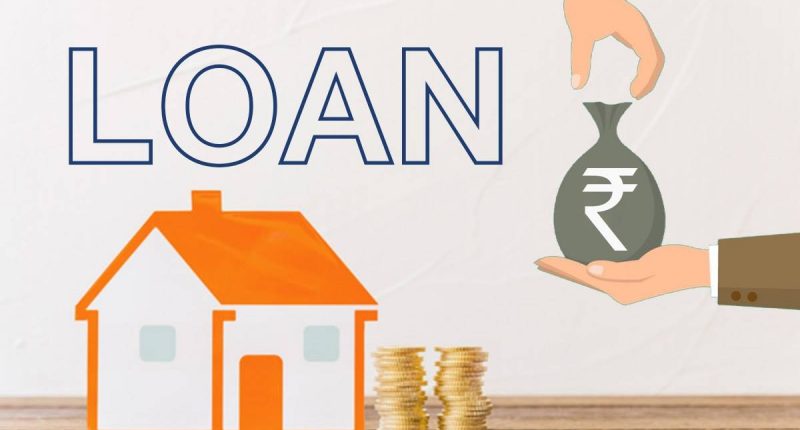The Key Components of a Loan Transaction
Every loan transaction, regardless of its size or purpose, is built on a few core elements:
Principal: This is the initial amount of money borrowed. It is the base figure upon which all interest and fees are calculated.
Interest: The cost of borrowing money. Interest is a percentage of the principal that the lender charges for the use of their funds. It can be either a fixed rate (stays the same for the life of the loan) or a variable rate (can fluctuate over time).
Term: The length of time over which the loan is to be repaid. This can range from a few months for a small personal loan to 30 years for a mortgage. The term directly impacts the size of the monthly payments and the total amount of interest paid.
Repayment Schedule: The plan outlining how the borrower will repay the loan, typically through regular, equal installments (e.g., monthly payments).
Collateral (for Secured Loans): An asset (such as a house or car) that the borrower pledges as security for the loan. If the borrower defaults on the loan, the lender has the right to seize the collateral to recover their losses.

The Different Types of Loan Transactions
Loans come in various forms, each tailored for a specific purpose and risk profile.
1. Personal Loans
Purpose: These are versatile, unsecured loans used for a variety of personal expenses, such as debt consolidation, medical bills, or home renovations.
Nature: Usually unsecured, meaning they don’t require collateral. Approval is based on the borrower’s credit score and income.
Key Features: Fixed interest rates and a term typically ranging from 1 to 7 years.
2. Mortgages
Purpose: Specifically for purchasing real estate.
Nature: A secured loan where the property being purchased serves as the collateral.
Key Features: Long terms (typically 15 to 30 years), large principal amounts, and lower interest rates compared to unsecured loans due to the security of the collateral.
3. Auto Loans
Purpose: For financing the purchase of a new or used vehicle.
Nature: A secured loan where the vehicle itself acts as the collateral.
Key Features: Fixed interest rates and a term typically ranging from 3 to 7 years.
4. Business Loans
Purpose: To fund business operations, expansion, equipment purchases, or working capital.
Nature: Can be either secured (e.g., backed by business assets) or unsecured.
Key Features: A wide variety of structures, including term loans, lines of credit, and SBA (Small Business Administration) loans, each with different terms and requirements.
5. Lines of Credit
Purpose: Provides a flexible source of funds for ongoing or unexpected expenses.
Nature: The borrower is approved for a maximum amount of credit, but only pays interest on the portion of the credit line that is used.
Key Features: Revolving credit, similar to a credit card, where the credit line becomes available again as it is repaid.
The Loan Transaction Process: Step-by-Step
A typical loan transaction follows a predictable path, from initial inquiry to final repayment.
1. Application
The borrower completes a loan application, providing personal and financial information. This includes details about their income, employment history, assets, liabilities, and the purpose of the loan.
2. Underwriting and Approval
The lender’s underwriting department reviews the application to assess the borrower’s creditworthiness. They look at factors like:
Credit Score: A numerical representation of a borrower’s credit history and reliability.
Debt-to-Income (DTI) Ratio: The percentage of a borrower’s gross monthly income that goes toward paying debts.
Collateral Valuation (for secured loans): The value of the asset being pledged.
Based on this assessment, the lender decides whether to approve the loan and, if so, determines the interest rate, term, and principal amount.
3. Loan Agreement
If approved, the borrower and lender sign a promissory note or a loan agreement. This is a legally binding contract that outlines all the terms of the loan, including the principal, interest rate, term, repayment schedule, and consequences of default.
It is crucial for the borrower to read and understand every detail of this document before signing.
4. Funding
Once the agreement is signed, the lender disperses the funds to the borrower, either as a lump sum or on a schedule as specified in the agreement.
5. Repayment
The borrower begins making regular payments according to the repayment schedule. These payments typically cover both the interest accrued and a portion of the principal.
Amortization is the process of gradually paying off a loan over time. In the early stages of a loan, a larger portion of the payment goes toward interest, while in later stages, more goes toward the principal.
6. Default and Consequences
Default occurs when the borrower fails to make payments as agreed.
Consequences: For unsecured loans, this can lead to a damaged credit score, collection agency involvement, and legal action. For secured loans, the lender has the right to seize and sell the collateral to recover their funds (e.g., foreclosure on a mortgage).
The Modernization of Loan Transactions
Technology is rapidly transforming the loan transaction process.
Online Lenders: The rise of online platforms has made it easier and faster for borrowers to apply for loans from the comfort of their homes.
Fintech (Financial Technology): Companies are using advanced algorithms and AI to automate credit scoring and underwriting, often leading to quicker approval times and personalized loan offers.
Digital Documentation: The process of signing and managing loan agreements is increasingly moving online, enhancing efficiency and security.

Conclusion
A loan transaction is a powerful financial tool that, when used responsibly, can help individuals and businesses achieve their goals. By understanding the fundamental components, the different types of loans available, and the step-by-step process, a borrower can navigate the financial landscape with confidence. It is a relationship built on trust and a legally binding commitment, making thorough research and a clear understanding of the terms the most important steps to a successful and stress-free borrowing experience.